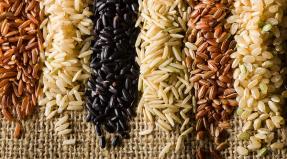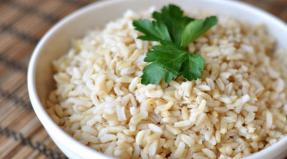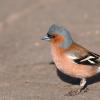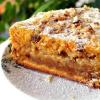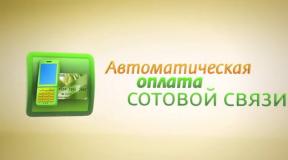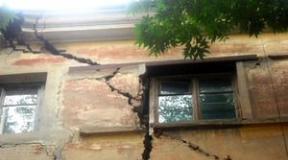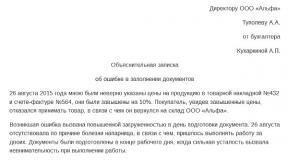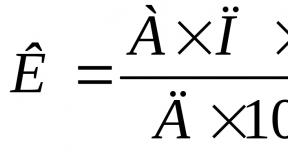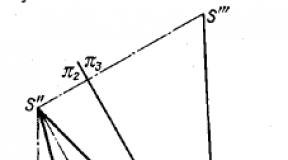Dupuytren's contracture - description, causes, symptoms (signs), treatment. Symptoms and diagnosis of Dupuytren's disease - treatment, surgery and rehabilitation course Mkb 10 Dupuytren's contracture treatment terms
Dupuytren's contracture (code according to ICD-10- M72.0) is a rather serious age-related disease, the cause of which is the cicatricial degeneration of the tissue structure of the palmar aponeurosis, which leads to a limitation, and sometimes to a complete cessation of the flexion function of the fingers (one or more) of the hand.
According to Wikipedia, this painful condition got its name in honor of the outstanding French doctor and scientist Guillaume Dupuytren, who in the 19th century managed to study this pathology and even develop the first methods of its treatment. In modern medicine, Dupuytren's contracture often appears under the name palmar fibromatosis .
This disease does not pose a threat to the patient's life, but is considered one of the primary causes of a person's disability. If this pathology is recognized in the early stages, its further development can be prevented to some extent with the help of conservative therapy, and in case of late diagnosis, it is likely that surgical intervention will have to be resorted to.
Pathogenesis
According to worldwide medical statistics, palmar fibromatosis affects approximately 3% of the population of our entire planet. In the vast majority of cases, it affects mature men in the age period from 40 to 60 years. In women, Dupuytren's contracture is found only in 4-8% of cases.

Depending on how pronounced the contracture of the fingers is, the patient is divided into 4 stages of the development of this disease.
Stage one
In the region of one of the palmar tendons (most often under the ring finger), a subcutaneous seal appears in the form of a small nodule. This neoplasm does not cause any pain and does not interfere with any manipulations performed by the hand. All fingers at this stage retain their usual mobility. Often a working person takes such a knot for a corn.
Stage two
The disease progresses with the transformation of the subcutaneous node into cicatricial cord with its transition to the proximal digital phalanx. Also in the area of the occurrence of such a strand, changes in the skin are observed, expressed by their roughness and redness. There is a violation of the mobility of the injured finger, which is in a bent position at an angle of approximately 30 ° relative to the palm and does not fully extend. Pain sensations are most often absent.
Stage three
The fibrous band extends over the entire surface of the finger and can extend up to its distal phalanx. The skin along the scar becomes wrinkled and folded. The affected finger is in a position of approximately 90 ° relative to the palm, while there is a sharp limitation of its functionality and contracture of the hand as a whole. The pain syndrome in most cases is not manifested or is weakly expressed, but any manipulation of the hand is extremely difficult. At this stage, it is already possible ankylosis (fusion of joint surfaces).
Stage four
Several fingers or even the entire palm are affected by pathological strands. Often they grow together into a common large scar. The first affected finger is in a fully flexed position without any possibility of extension, and the rest of the hand is severely deformed. There may be subluxations and dislocations of the interphalangeal joints, in which the patient will feel constant aching pain. The performance of the brush in this period is virtually zero.
The reasons
Despite the fact that such a disease as Dupuytren's contracture has been described for a long time, and the methods of dealing with it with the development of medicine are constantly reaching a new, more effective level, it has not yet been possible to establish the specific cause of this pathology. In the process of studying this disease, a hereditary risk factor for its formation was unequivocally proven, since a gene was isolated that is present only in the genome of people with palmar fibromatosis in a family history. However, not all carriers of such a gene show signs of the disease, many of them do not face this problem until the end of their lives.
Apparently, hand contracture develops only in people predisposed to it when the hand is exposed to a combination of risk factors for its occurrence, which include:
- bad habits ( smoking , etc.);
- injuries in the area of the hand (including minor multiple and / or single serious damage);
- professional activity (working conditions associated with a constant and heavy load on the hand);
- age-related changes in the structure of hand tissues;
- gender (males suffer from palmar fibromatosis much more often);
- concomitant systemic pathologies (, etc.).
According to many orthopedic doctors, when the above factors affect the carrier of the gene responsible for the formation of Dupuytren's contracture, pathological processes are activated in the region of the palmar aponeurosis, resulting in the degeneration of tendon tissues, and consequently to the occurrence and further progression of palmar fibromatosis.
Symptoms
As in the case of the stages of development of Dupuytren's contracture, doctors distinguish 4 conditional stages of the progression of this pathology, each of which corresponds to a certain negative symptomatology.
Preclinical stage
In this period, symptoms typical of palmar fibromatosis do not yet appear, however, the patient may already feel heaviness and fatigue in the problem hand, numbness of the fingers, morning stiffness, and aching pains in the hand. In some cases, there is dryness of the skin of the palm, its slight compaction and smoothing of skin folds on it. As a rule, the first cycle is quite long and can last up to 8 years.
Stage of initial manifestations
At this stage, the patient already notices the first, most often visual, symptoms of the disease, which is manifested by initial atrophic changes occurring in the subcutaneous fatty tissue of the palm. At this time, for the most part, under one of the fingers (ring or middle), a subcutaneous node (sometimes several) appears, and the finger itself “pulls” a little to the palm. Also, small indentations may be noted on the skin around the nodes. This stage proceeds much faster and takes an average of 2 years.
Stage of intensive progression
The affected area of the palm at this stage gradually increases and grows. Under the skin, not only tubercles and nodules are determined, but also rigid strands formed from connective tissue. Such strands can run along one (in most cases) or several fingers and are especially noticeable at the moment when the patient tries to unbend them. At the same time, there is a clear flexion contracture, in other words, the inability to fully straighten the fingers.
All this happens due to the degeneration of the tendon tissue into scar tissue, due to which it loses its elasticity and shortens. At the same time, areas of inflammation and peeling appear on the skin of the palm, as well as well-defined depressions in the area of \u200b\u200bits folds and funnel-shaped "retractions". The skin itself becomes dense and rough, in some cases it can develop.
late stage
The boundary stage of palmar fibromatosis is characterized by the spread of the pathological process to virtually the entire area of \u200b\u200bthe palm. Flexion contractures are noted in relation to several or even all fingers of the hand. Fibrous ankylosis clearly expressed and often accompanied by subluxations and dislocations of the finger joints. The skin is thick, dry and rough. Fatty subcutaneous tissue is most often already atrophied. There is simply nowhere to progress the disease further, since at this stage the functionality of the hand is maximally impaired, and even for its partial renewal, more than one operation will be required.
It should be remembered that the pain syndrome may practically not manifest itself in the early stages of Dupuytren's contracture, and even in its later periods it is observed only in 10% of patients. All the main symptoms of this disease are mainly visual. For this reason, early diagnosis of this pathology is difficult and largely depends on the attentive attitude of each individual to their health.
Analyzes and diagnostics
Diagnosis of palmar fibromatosis, as a rule, does not require the appointment of any instrumental or laboratory tests or analyzes. A similar diagnosis is made by an orthopedic doctor based on a visible picture of the condition of the hand and specific complaints of the patient. In some cases, for differential diagnosis, the usual radiography problematic part of the hand.
In order to independently detect Dupuytren's contracture, you can conduct a small test at home to detect or exclude signs of the formation of this disease. The test for the presence of palmar fibromatosis consists of the following steps:
- Press your hand palm down on a flat horizontal surface and check for a gap between the surface being used and the palm of your hand.
- In the absence of such, Dupuytren's contracture is unlikely.
- If a small arcuate gap is found, the second stage of the disease can be suspected.
- A significant similar gap in the form of a kind of "hut" may indicate the third stage of palmar fibromatosis.
Treatment of Dupuytren's contracture
Treatment of finger contracture is aimed at reducing or eliminating cicatricial tissue deformation in the palm area and depends on the diagnosed stage of the disease and the severity of negative symptoms. Since this pathology is accompanied by rather serious changes in the tissue structure, an integrated approach is used in its therapy, including the prescription of medications, the use of physiotherapeutic methods and surgical intervention.
Relatively effective treatment without surgery for Dupuytren's contracture is possible only at the first stage of its development, when only small areas of the palmar aponeurosis are involved in the pathological process. Already at the second stage of the disease, to eliminate its consequences, most likely, an operation will be needed, and at the third and fourth stages, it is simply impossible to do without the repeated intervention of the surgeon. That is why it is very important for the patient himself, at the first suspicions of the development of this pathology, to consult a specialist as soon as possible, and not to self-medicate.
The doctors
Medications
Any drug therapy, that is, the treatment of Dupuytren's contracture without surgery, does not lead to a complete recovery of the patient, but only reduces the rate of spread of the disease. The use of drugs is most effective at the initial stage of pathology development, as well as after surgery during the rehabilitation period.
In turn, medications can be recommended to the patient in case of his categorical refusal to help the surgeon, in order to at least slightly alleviate his condition.

As a rule, course treatment without surgery is carried out on the basis of a polyclinic twice a year. At the same time, the following drugs are prescribed:
- glucocorticoids ( , , Betaspan , etc.) - are used in the form of injections together with an anesthetic to reduce the inflammatory process and pain;
- proteolytic enzymes (, etc.) - are used as an application in the area of \u200b\u200baffected tissues in order to activate metabolic processes in them that help soften scars and slow down tissue degeneration;
- collagenase injections ( Xiaflex ) directly into the area of existing contracture - are prescribed to destroy collagen bonds in fibrous tissues.
Procedures and operations
Physiotherapy
In addition to drug treatment, in the fight against the manifestations of Dupuytren's contracture, methods are also widely used that are also prescribed in courses simultaneously with the use of drugs. As in the previous case, these procedures are not able to fully cope with this disease and are used as a secondary therapy in the initial stages of the disease or after surgery has already been performed.
By prescribing physiotherapeutic procedures to the patient, the orthopedic surgeon pursues the following goals:
- activate metabolic processes in the affected tissues of the palm and fingers;
- soften scar formations;
- as much as possible to restore the mobility of the joints of the hand.
To improve the condition of already formed scar tissue, the following techniques can be used:
- paraffin therapy and ozokeritotherapy (thermal methods of influence on damaged tissues);
- mud therapy .
In order to reduce the tension of the formed strands, the following can be prescribed:
- infrared laser therapy ;
- local darsonvalization (exposure to alternating current of high voltage and frequency);
- low frequency electrotherapy .
To slow down the process of new scarring of tissues and resorption of already formed scars, apply:
- ultraphonophoresis , electrophoresis and / or compresses with the above proteolytic enzymes or other drugs at the discretion of the attending physician.
To stimulate the work of the carpal muscles resort to help:
- electromyostimulation ;
- interference therapy .
To expand the vessels in the palm area, thereby improving blood flow to its damaged part, will help:
- warm compresses;
- massotherapy ;
- ultraviolet irradiation (in erythemal doses with the average wavelength used).
Surgical intervention
Orthopedic doctors have not yet come to a consensus regarding the optimal timing of surgery for Dupuytren's contracture, but they all agree that if the flexor function of the finger is limited by more than 30 °, surgical intervention is simply necessary. As part of such surgical actions, the surgeon must excise all existing scar tissue and try to restore the motor functionality of the hand as much as possible. In this case, a personal approach to each patient is very important, taking into account all the features of the course of the pathological process, including the area of the hand affected, the rate of progression of the disease, the patient's age, the presence of predisposing factors and other diseases.
If the contracture is localized in a small area of the hand, surgery is performed under local anesthesia, and if the pathology is widespread, general anesthesia is used, since such an operation is quite long. At the moment, two types of surgical manipulations are used, namely, closed and open types. In the first case, the separation of the tendons occurs with the help of a special instrument inserted into the palm ( needle aponeurotomy ), and in the second, all pathologically altered tissue is removed after cutting the skin in the necessary places of the hand. When comparing these surgical techniques, it should be noted that the closed type intervention is less traumatic, but at the same time more often leads to relapses. Based on this, orthopedic surgeons prefer an open type of surgery, which allows them to more thoroughly and completely eliminate the existing fibromatosis .
In this situation, the doctor chooses the tactics and scheme of surgical intervention on his own, by and large, based on the location of the scars on the palm and fingers. Based on the visible spread of the pathology, the surgeon makes the necessary incisions on the skin of the hand and excise the altered tissues. Most often, they resort to a transverse incision in the region of the palmar fold, combining it with L- or S-shaped incisions made on the surface of diseased phalanges. If multiple adhesions are found in a patient, it may be necessary to dermoplasty which is performed with a free skin flap.

After excision of the existing fibromatosis, the wound is drained (if necessary), sutured and a sterile pressure bandage is applied to the hand, which prevents the formation of blood accumulations and the appearance of fresh scars. Then, using a plaster splint, the hand and fingers are fixed in a functionally advantageous position for them. In the absence of complications, the splint and sutures are removed after 10 days, but sometimes the patient is recommended to wear a cast for several weeks or even months. In the final stages of the disease, to eliminate its consequences, not one, but several consecutive operations may be required. In the postoperative period, it is important to perform regular gymnastics in order to restore normal finger mobility.
In particularly difficult circumstances of the course of Dupuytren's contracture, surgeons can apply a surgical technique called - arthrodesis . The essence of such an operation is to create a fixed joint in the affected finger with its fixation in the most favorable position for the patient's future life. At the same time, the finger itself will not work in the future, but it will not particularly interfere with the manipulations performed by the hand. With a running contracture of the finger, which cannot be removed surgically, the patient can be offered it, in some cases this is the best way out of the situation.
It should be remembered that, despite the effectiveness of surgical treatment of palmar fibromatosis, in fact, in half of the cases after it, there are relapses of the disease that require repeated surgical intervention. Most of all, young patients who have a rapid progression of the pathology are susceptible to such relapses.
Treatment with folk remedies
Along with drug therapy, the treatment of Dupuytren's contracture at home using folk methods is not able to fully rid the patient of all manifestations of the disease, but can to some extent alleviate his painful condition. In this case, warming compresses, baths and gymnastic exercises are considered the most suitable traditional medicine.
- For example, a needle-based bath, which is prepared by boiling 500 grams of fresh needles (spruce, pine) in 1 liter of water, will help reduce pain in the area of an existing contracture. After such a procedure, the resulting broth is infused for a day, mixed with sea salt (1/6 of a glass) and used for its intended purpose. Before using the bath, coniferous broth is recommended to be heated to a temperature slightly higher than body temperature.
- Also, good reviews in reducing the symptoms of palmar fibromatosis are received by the method of Kalmyk folk therapy, which involves the use of fresh sawdust, clay and horse manure mixed in equal proportions in the form of applications. A similar composition should be applied twice a day in a warm form to the affected brush. The specificity of one of the ingredients of such a remedy naturally repels some patients from its use, although people who have tried this method on themselves note its considerable effectiveness.
- The herbal bath, prepared by boiling identical parts (1 tablespoon each) of eucalyptus, calendula and chamomile, has proven itself well in this regard. After 10 minutes of boiling such a mixture of herbs, it must be infused for 2-3 hours, then strain and add 1 tbsp. l. sea salt. Before the procedure, the decoction is heated to a temperature of approximately 50 ° C and the problematic brush is steamed in it for 20-30 minutes.
- In turn, chestnut infusion will help to cope with the negative symptoms of the disease. To prepare it, you need to chop fresh chestnuts and fill a 0.5 liter jar with such gruel, leaving 2-3 centimeters of free space on top. After that, fill the jar with ammonia to the top and put it in a dark place for 9 days. After this time, the resulting mixture should be used as a rubbing, which can be applied 2-3 times a day for 2 months.
All these and other similar methods of traditional medicine are best combined with gymnastic exercises aimed at improving the motor activity of the damaged hand. In this aspect, you can select any training for the fingers, during which their motor skills will be involved. Among other things, knitting, modeling, typing, playing keyboards, etc. have a positive effect on the palmar aponeurosis.
Despite the abundance of thermal methods of influencing the affected tissues and a huge number of all kinds of exercises that help restore the motor function of the fingers, reviews of the treatment of Dupuytren's contracture with folk remedies note their rather weak effectiveness. Therapy of such a serious pathology must necessarily be carried out by a specialist, but even in this case there is no absolute guarantee of its cure.
Prevention
Until today, doctors have not been able to accurately establish the true causes of Dupuytren's contracture, as a result of which specific preventive measures for this disease are not provided. In order to reduce the risk of developing this pathology, orthopedists recommend everyone (especially men) who has a family history of palmar fibromatosis to stop smoking and drinking alcohol in large quantities. Such people should choose professions that are not associated with hard work with their hands, and also try to eat a balanced diet.
Consequences and complications
Do not forget that palmar fibromatosis is a rather serious disease, which, if the doctor does not diagnose it in time or the patient does not want to undergo treatment, is likely to lead to a complete loss of the hand's capacity, and possibly to amputation of the fingers. In order to avoid such extremely negative consequences, any person who suspects the development of this pathology should immediately seek medical help and follow all the recommendations of an orthopedist, including those regarding surgical intervention.
Forecast
It is rather difficult to predict the course of Dupuytren's contracture, since the development of this disease in individual patients can occur in completely different ways. In some cases, a slight limitation of the motor activity of the hand can accompany the patient for many years, while in others the disease progresses just the same rapidly.
Be that as it may, palmar fibromatosis will sooner or later reach its limiting stage, and then the only way out of the situation will be a surgical operation.
List of sources
- Treatment of patients with Dupuytren's contracture (clinical recommendations) - "Nizhny Novgorod Research Institute of Traumatology and Orthopedics", A.V. Novikov, S.V. Petrov. Nizhny Novgorod, 2013
- Asfura I.I. Comprehensive treatment of Dupuytren's disease. Abstract dis.c.m.s. Minsk. 1986. - 16 p.
- Volkova A.M., Kuznetsova H.JI. Dupuytren's contracture (classification, clinic, diagnosis, treatment, medical examination). Methodical recommendations for practical doctors. Sverdlovsk. 1986. - 16 p.
- Gerasimenko S.I. Dupuytren's disease and its complex treatment. Abstract dis. PhD Kyiv. 1982. - 20 p.
- Mikusev I.E. Dupuytren's contracture (issues of etiology, pathogenesis and surgical treatment). Kazan. 2001. - 175 p.
Dupuytren's contracture- painless thickening and shortening of the palmar fascia due to fibrous tissue proliferation, leading to flexion deformity and loss of hand function. Dominant age- over 40 years old. Predominant gender- male (10:1).
Code according to the international classification of diseases ICD-10:
- M72.0
The reasons
Risk factors. Chronic trauma. Neuropathy of the brachial plexus. Rare hereditary syndromes
Pathomorphology. Fibrosis and signs of inflammation are found in the palmar fascia and adjacent flexor tendon sheaths. The same changes are sometimes found in the plantar fascia.
Symptoms (signs)
clinical picture. Changes can be either unilateral or bilateral. With a unilateral process, the right hand is more often affected. The ring finger is most often deformed, followed by the little finger, middle and index fingers. At the beginning of the disease, small painless dense nodules appear in the palmar fascia, which then combine into a longitudinal cord. The cord is soldered to the skin and surrounding tissues. The skin becomes folded, flexion contractures gradually develop. The fingers are bent at the metacarpophalangeal joints to an angle of 100°, active and passive extension of the fingers is impossible. Nodules are palpable under skin folds or over joints. In the later stages of the disease, the fingers are bent at the metacarpophalangeal joints to an angle of 90°, in the proximal - from a blunt to a right angle (often the nail phalanx is pressed against the palm), extension of the fingers is impossible.
Associated pathology. Ledderose's disease is a lesion of the plantar fascia. Peyronie's disease (171000, Â) is a lesion of the fascia of the penis.
Treatment
Treatment. Conservative treatment is ineffective: injections into the tissues of the altered tendon sheaths of hydrocortisone, lidase, phonophoresis with hydrocortisone, mud applications, dressings with dimethyl sulfoxide, injections of the vitreous body, aloe; massage, therapeutic exercises, physiotherapy. Surgical treatment - the technique depends on the stage of the disease: subcutaneous fasciotomy, limited fasciectomy, radical fasciectomy.
Synonyms. Dupuytren syndrome. Contracture of the palmar aponeurosis
ICD-10. M72.0 Palmar fascial fibromatosis [Dupuytren's]
Excludes: loose body at knee joint (M23.4)
Excluded:
- chondrocalcinosis (M11.1-M11.2)
- intra-articular lesion of the knee (M23.-)
- disorders of calcium metabolism (E83.5)
- ochronosis (E70.2)
Instability due to old ligament injury
Weakness of ligaments NOS
Excludes: displacement or dislocation of joint:
- congenital - see congenital malformations and deformities of the musculoskeletal system (Q65-Q79)
- current - see injuries of the joints and ligaments by area of the body
- repetitive (M24.4)
Excluded:
- acquired limb deformities (M20-M21)
- sheath tendon contracture without joint contracture (M67.1)
- Dupuytren's contracture (M72.0)
Excluded:
- spine (M43.2)
- joint stiffness without ankylosis (M25.6)
Excludes: iliac tibial ligament syndrome (M76.3)
In Russia, the International Classification of Diseases of the 10th revision (ICD-10) is adopted as a single regulatory document for accounting for morbidity, reasons for the population to contact medical institutions of all departments, and causes of death.
ICD-10 was introduced into healthcare practice throughout the Russian Federation in 1999 by order of the Russian Ministry of Health dated May 27, 1997. №170
The publication of a new revision (ICD-11) is planned by WHO in 2017 2018.
With amendments and additions by WHO.
Dupuytren's contracture
type of middle age - differs in a less intense course than the senile type, somewhat limits the ability to work;
female type - occurs in women, while significant progression is not observed;
explosive type of flow - characterized by high activity of fibroplastic processes, significant functional disorders and a tendency to relapse.
- Stage 1 - the presence of nodes or strands in the palm area in the absence of contractures and functional disorders;
2nd stage - the beginning contracture of one or more metacarpophalangeal joints;
Stage 3 - significant contractures of the metacarpophalangeal joints and incipient contractures of the proximal interphalangeal joints;
Stage 4 - pronounced contractures of the metacarpophalangeal and proximal interphalangeal joints with hyperextension of the distal interphalangeal joints.
With KD, 3 stages of the disease are traditionally distinguished:
- 1st stage - the appearance of changes in the palmar aponeurosis (nodules, very stable and immobile, strands) without contracture of the fingers;
Stage 2 - the appearance of contracture of the fingers (limitation of extension in the metacarpophalangeal joints) and skin lesions;
Stage 3 - a pronounced contracture of the fingers in the flexion position (extension is impossible) with the development of secondary changes in the skin and interphalangeal joints of the fingers.
Distinguish isolated contracture of one, more often IV or V, finger and widespread KD - on all fingers. A typical form of CD - the development of contracture begins with the palm, with an atypical form - from the finger. According to the prevalence, palmar, finger and palmar-finger forms are distinguished:
- digital form - characterized by the development of pathological changes, as a rule, in the longitudinal cords of the aponeurosis within the finger; at the same time, flexion contracture of the proximal interphalangeal joints (PMFS) and extensor contracture in the distal interphalangeal joints (DMFS) occur; occurs in 10% of cases;
palmar form - characterized by damage to the longitudinal bundles of the aponeurosis within the palm; there are no pathological changes on the fingers, and only the metacarpophalangeal joints (PFJ) are in a state of flexion contracture; observed in 30% of cases;
mixed palmar-natal form - longitudinal bundles on the hand and fingers are affected; PFJ, PMFS, and sometimes DMFS are in a state of flexion contracture; this form occurs most often - in 60% of cases.
The data of specialized literature show that in clinical practice, the classification of KD according to the degree of deformity and dysfunction of the hand is most often used. It meets modern requirements and corresponds to four degrees of functional disorders. In accordance with this classification, 4 degrees of flexion contracture of the fingers are distinguished:
- I - from 0° to 35°;
II - from 35° to 70°;
III - from 70° to 90°;
IV – from 90 to 135°.
This classification meets modern requirements and corresponds to the 4th degree of functional disorders given in the regulatory documents of the medical and social examination - ITU (see Order of the Ministry of Health and Social Development of Russia dated August 22, 2005 No. 535 "On approval of classifications and criteria used in the implementation of medical and social examination citizens by federal state institutions of medical and social expertise”). In accordance with this classification, 4 degrees of flexion contracture of the fingers are distinguished:
- I degree (minor dysfunction of the hand) - subcutaneous nodes in the palmar aponeurosis: patients complain of a feeling of "swelling" of the hand in the morning, "fatigue" in the hands, "numbness" of the fingers, cold fingers even in warm weather; typical subcutaneous nodular seals are formed on the palmar surface of the hand, subsequently turning into a dense knot or cord that captures the skin and subcutaneous tissue and goes to the base of one or another finger; the function of the fingers and hand is not impaired;
II degree (moderate dysfunction of the hand) - persistent flexion contracture of one finger (usually IV or V) in the metacarpophalangeal and proximal interphalangeal joints, not exceeding an angle of 90 °; flexion of the fingers is preserved, the function of the hand is moderately impaired;
III degree (pronounced dysfunction of the hand) - flexion contracture of the fingers at an angle of 90 °, the fingers are maximally bent, the fingertips touch the palm, the movements of the fingers are impaired; as a result of wrinkling of the articular bags, subluxations of the phalanges of the fingers are possible; pronounced dysfunction of the hand without pain;
IV degree (significantly pronounced dysfunction of the hand) - flexion contracture of the fingers at an angle of at least 90 °, pronounced, there are arthrogenic contractures, dislocations of the phalanges; significantly pronounced dysfunction of the hand; pain is usually absent; in some cases, another hand and feet can be simultaneously affected (Ledderhose's disease - contractures of the plantar aponeurosis of the feet), more rarely - the cavernous bodies of the penis (Peyronie's disease).
Diagnostics. The diagnosis is made on the basis of clinical examination, palpation, assessment of the prevalence of the process and functional disorders of the main functions of the hand (grasping and holding objects) and includes, according to indications, radiography of the hand, rheovasography, EEG and other special methods. Differential diagnosis is carried out with visually similar diseases: neurogenic, traumatic, rheumatoid and ischemic contractures, scleroderma, hygromas and fibromas of the synovial-aponeurotic canals, tendovaginitis, stenosing ligamentitis and some congenital anomalies (campto- and clinodactyly).
Dupuytren's contracture - description, causes, symptoms (signs), treatment.
Short description
Dupuytren's contracture is a painless thickening and shortening of the palmar fascia due to fibrous tissue proliferation, leading to flexion deformity and loss of hand function. The predominant age is over 40 years. The predominant gender is male (10:1).
The reasons
Risk factors Chronic trauma Brachial plexus neuropathy Rare hereditary syndromes
Pathomorphology Fibrosis and signs of inflammation are found in the palmar fascia and adjacent flexor tendon sheaths. The same changes are sometimes found in the plantar fascia.
Symptoms (signs)
Clinical picture Changes can be both unilateral and bilateral. With a unilateral process, the right hand is more often affected. The ring finger is most often deformed, then the little finger, middle and index fingers. At the beginning of the disease, small, painless, dense nodules appear in the palmar fascia, which then combine into a longitudinal band. The cord is soldered to the skin and surrounding tissues. The skin becomes folded, flexion contractures gradually develop. The fingers are bent at the metacarpophalangeal joints to an angle of 100°, active and passive extension of the fingers is impossible. The nodules are palpable under the skin folds or over the joints. In the later stages of the disease, the fingers are bent at the metacarpophalangeal joints to an angle of 90 °, in the proximal - from a blunt to a right angle (often the nail phalanx is pressed against the palm), extension of the fingers is impossible.
Concomitant pathology Ledderose's disease - damage to the plantar fascia Peyronie's disease (171000, Â) - damage to the fascia of the penis.
Treatment
Treatment Conservative treatment is ineffective: injections into the tissues of the altered tendon sheaths of hydrocortisone, lidase, phonophoresis with hydrocortisone, mud applications, dressings with dimethyl sulfoxide, injections of the vitreous body, aloe; massage, therapeutic exercises, physiotherapy Surgical treatment - the technique depends on the stage of the disease: subcutaneous fasciotomy, limited fasciectomy, radical fasciectomy.
Synonyms of Dupuytren's syndrome Contracture of the palmar aponeurosis
ICD-10 M72.0 Palmar fascial fibromatosis [Dupuytren].
Dupuytren's contracture and its treatment
Dupuytren's contracture is a fibrous degeneration of the palmar aponeurosis that results in flexion contracture of the fingers. The second name of the disease is palmar fibromotosis. The disease is more common in men over the age of 40. The pathological process has a slow progressive course, causes a violation of the motor activity of the hand and forms a disability in case of damage to the working upper limb. In most clinical cases, the 4th and 5th fingers (ring and little fingers) on one hand are affected. Less commonly, all fingers on both hands or feet are involved in the pathological process. In the international classification of diseases or ICD 10, pathology is assigned code M 72.0.
Causes of the disease
Dupuytren's contracture develops as a result of sclerotic processes in the tissue of the palmar fascia. Under the skin of the palm is the palmar aponeurosis, which protects the tendons of the hand, blood vessels and nerves from damage and is involved in the flexion-extensor movements of the fingers. In rare cases, the pathological process develops in the plantar fascia of the foot, which performs similar functions.
In palmar fibromatosis, the ring finger and little finger are usually affected.
Due to the influence of adverse factors, fibrous nodules and strands are formed in the fascia, causing wrinkling and deformation of the aponeurosis. As a result, there is a pathologically forced position of the fingers in a state of flexion at a different angle to the palm. Extension of the fingers becomes difficult or impossible, which eventually leads to ankylosis (immobility) of the interphalangeal and metacarpophalangeal joints. In this case, the brush loses its functional activity. This causes loss of ability to work and self-care skills.
Modern medicine considers hereditary predisposition to be the main cause of the disease. The pathology is associated with a defective gene, which increases the risk of contracture in members of the same family and close relatives.
For the manifestation of a genetic mutation, the impact of adverse factors is necessary:
- hand or foot injury;
- heavy physical labor;
- endocrine pathology (thyrotoxicosis, diabetes mellitus);
- chronic liver diseases;
- alcohol abuse;
- nicotine addiction;
- epilepsy.
Clinical picture
Dupuytren's contracture is more common in men over the age of 40. In this case, the disease has a slow progressive course. If the disease develops at a young age, it is usually characterized by an acute onset and a rapid increase in sclerotic changes in the palmar aponeurosis. Clinical manifestations of contracture are in violation of the work of the hand due to forced flexion of the fingers. Anatomical and functional disorders occur several years or a decade after the onset of the first symptoms of pathology.
Clinical manifestations of contracture progress slowly
The initial manifestations of the disease are accompanied by the formation of painless seals on the palmar surface of the hand, which are formed during focal sclerosis of the fascia. The progression of the pathological process leads to an increase in areas of fibrosis with spread to the area of the fingers. Wrinkling of the palmar aponeurosis causes a change in the skin of the palm and gives the skin the appearance of parchment paper.
Shortened fascia contributes to the appearance of flexion contracture and makes it difficult to independently extend the fingers.
Prolonged position of the hand in an unnatural position forms ankylosis of the joints. The progression of the pathology leads to the appearance of pain in the area of fibrous cords, which makes patients seek medical help.
Compression of the nerves and blood vessels by strands causes trophic skin disorders (dryness, peeling, chilliness of the hands) and a decrease in the sensitivity of the fingers. With the defeat of the ring finger and little finger, the hand takes the form of an "obstetrician's hand". This form of the hand leads to a permanent dysfunction of the upper limb and causes a decrease in working capacity.
Fibrosis of the soft tissues of the palm and fingers in Dupuytren's contracture
According to the nature of the violation of the motor function of the fingers, 4 degrees of Dupuytren's contracture are distinguished.
- The first degree - is not accompanied by a violation of the extension of the fingers.
- The second degree - the deficit of extension of the fingers does not exceed 30 degrees.
- The third degree - the deficit of extension of the fingers is in the range from 30 to 90 degrees.
- Fourth degree - the deficit of extension of the fingers is more than 90 degrees.
To increase the effectiveness of therapy, it is necessary to consult a doctor in the first stages of the disease. Advanced cases of the disease lead to damage to the vessels and nerves of the hand, complete immobility of the fingers, which necessitates amputation of the affected anatomical structures.
Diagnosis and treatment
When clinical signs of the disease occur, the doctor usually does not have difficulty in making a diagnosis. When first seeking medical help from a traumatologist or surgeon, the doctor finds out the patient's complaints, the causes of the disease, evaluates the mobility of the fingers. To confirm the diagnosis, x-rays and ultrasound of the hand are prescribed, which helps to identify the degree of damage to the joints and palmar fascia.
Treatment of Dupuytren's contracture is carried out conservatively and surgically. Without surgery, the initial forms of the disease are treated, which are not accompanied by significant flexion contracture of the fingers. Conservative therapy is aimed at preventing the progression of the pathology, eliminating the pain syndrome, and improving the motor activity of the hand.
Soft tissue incision line during surgery
Conservative treatments for Dupuytren's contracture:
- introduction by injection into the palmar aponeurosis of the collagenase enzyme to remove fibrous bands;
- skin application or electrophoresis of a collalizin solution to prevent cicatricial changes in the skin of the palms and feet;
- longet bandages on the brush for extension of the fingers (applied at night);
- novocaine blockades with the addition of glucocorticoids (diprospan, kenalog) to reduce pain in the arm;
- warm baths for hands and feet;
- massage of the hands and feet;
- physiotherapy (electrophoresis with novocaine, UHF, paraffin applications);
- therapeutic exercises to develop joints and increase the elasticity of the palmar fascia.
Conservative therapy only stops the development of the disease. The effectiveness of treatment increases the rejection of addictions. To radically get rid of contracture, an operation is performed, the volume of which depends on the severity of anatomical and functional disorders. The operation is usually prescribed for 3-4 degrees of the disease. During surgery, partial or complete removal of the palmar aponeurosis is performed.
Types of operations for Dupuytren's contracture:
- partial excision of the palmar aponeurosis in the area of localization of fibrous cords;
- complete removal of the palmar fascia with significant flexion contracture of the fingers;
- arthrodesis in the advanced stage of the disease, which is accompanied by impaired mobility of the metacarpophalangeal and phalangeal joints;
- amputation of fingers when joints, nerves, blood vessels are involved in the pathological process.
Rehabilitation after surgery consists in the appointment of conservative methods of therapy: physiotherapy, massage, physiotherapy exercises (exercise therapy).
Reviews of patients about the treatment of the disease
Currently, there is no consensus among physicians about the timing of the appointment of conservative methods and surgical intervention. In the case of the onset of the disease in adulthood, after years the pathology has a slow progressive course and responds well to conservative treatment. The appearance of pathology at a young age increases the risk of rapid formation of flexion contracture and ankylosis of the finger joints, which indicates in favor of the operation.
In some cases, the pathological process behaves unpredictably, which requires constant monitoring of the patient by a specialist. The doctor chooses the method of therapy in each case, based on the age of the patient, comorbidities, and professional activities. The following are patient reviews of various types of treatment for the disease.
Joint changes during contracture formation
Maxim Alexandrovich, 30 years old. I work as a mechanic in a factory. A year ago, a small seal appeared on the right palm, which did not cause discomfort. A few months later, the seal increased in size and such “bumps” formed on the left arm. There were pains in the hands, growing towards the end of the working day. Over time, I began to notice the constant flexion of the ring finger, which was difficult to unbend. The inability to work with his hands forced him to turn to a surgeon. An operation was performed for palmar fibromatosis, after which he returned to work. Fingers work normally, pains have stopped.
Sergey Nikolaevich, 48 years old. In my family, my father and older brother were diagnosed with Dupuytren's contracture. Therefore, after the appearance of a small “bump” on the right palm, he immediately went to the doctor. Periodically I do injections with collagenase, undergo physiotherapy, massage the hands and develop my fingers with the help of special exercises. For 10 years, several new seals have appeared on the palms of the hands, but the movements of the fingers are free. The doctor said that with constant monitoring and treatment, the operation would not be required.
Anna Ivanovna, 53 years old. She underwent surgery for palmar fibromatosis of the right hand 10 years ago. Five years later, the disease appeared on the left arm. Every year I go through massage courses, develop brushes with the help of therapeutic exercises, and do electrophoresis with collalizin. Despite the treatment, it is difficult to unbend the fingers of the hand, pains appeared in the hand. I'm getting ready for another operation.
Dupuytren's contracture is a progressive disease of the palmar aponeurosis that leads to finger flexion and dysfunction of the hand. A timely visit to the doctor helps to improve the prognosis of the pathology and allows you to maintain the work of the hand with conservative methods. Late stages of the disease are subject to surgical treatment and may lead to amputation of the fingers.
Comments
The disease is named after the French surgeon Guillaume Dupuytren, who at the beginning of the 19th century proposed a radical method of treating contractures - the aponeurotomy operation.
Add a comment
ATTENTION! All information on this website is for informational purposes only. Diagnosis and prescription of medications require knowledge of the medical history and examination by a doctor. Therefore, we strongly recommend that you consult a doctor for treatment and diagnosis, and not self-medicate.
Symptoms and diagnosis of Dupuytren's disease - treatment, surgery and rehabilitation course
Dupuytren's palmar fascial fibromatosis is a non-inflammatory disease that causes scarring of the palmar tendons. This disease affects the inhabitants of Scandinavia, Ireland and Eastern Europe. Dupuytren's contracture is characterized by the fact that in a patient one or two fingers cease to unbend, a kind of lump forms in the area of the affected tendons, and the hand partially loses its functions.
What is Dupuytren's contracture
The disease resulting in a deformity of the hand is Dupuytren's contracture. The disease affects the ring finger and little finger. Dupuytren's syndrome develops with excessive development of connective tissue, leading to a reduction in the fascia in the palm of your hand. The ICD-10 code is M72.0. The disease is not associated with disorders of carbohydrate, protein or salt metabolism. As a result of the pathological process, the patient loses the ability to unbend one or two fingers, in advanced cases stiffness of the fingers develops. The disease can degenerate into a lesion of the aponeurosis of the feet.
The reasons
At the moment, the exact causes of contracture of the fingers have not been established. The onset of the disease is influenced by heredity, age (it is very rare in young people). In men, contracture occurs more often, develops more rapidly compared to women. Smoking and alcohol abuse increase the likelihood of Morbus Dupuytren disease. Another factor that increases the risk of the disease is diabetes mellitus.
Symptoms
Doctors distinguish the following signs of the disease:
- Impaired ability to extend fingers.
- Stiffness of the joints of the involved fingers.
- development of ankylosis.
- Deformities of the hand, the occurrence of compaction in the palm of your hand.
- Formation of subcutaneous indurations that thicken over time.
Degrees
The contracture of the fingers develops without certain patterns. In some cases, for many years, Dupuytren's disease remains at the initial stages, in others - in a few months the disease reaches the last stage. Depending on the severity of symptoms, there are three degrees of palmar aponeurosis:
- First. The diameter of the nodular outgrowth on the palm does not exceed 1 cm. The cord may appear on the palm or in the area of the metacarpophalangeal joint. It is possible to treat Dupuytren's contracture without surgery.
- Second. The cord is located in the region of the main phalanx, becomes more dense and coarse. The skin on the palm of the hand roughens, funnel-shaped depressions and retracted folds form at the site of the lesion. The affected fingers are bent at the metacarpophalangeal joint at an angle of 100 degrees, completely losing the ability to unbend.
- Third. The cord is formed on the middle or nail phalanges. Flexion and extension movements are limited. The phalanges are located to each other at an angle of 90 degrees, ankylosis is possible.
Diagnosis of Dupuytren's contracture
The diagnosis begins with a questioning of the patient: the doctor needs to know about the patient's complaints, the impact of contracture on the quality of life, and the duration of the course of the disease. The doctor may ask if the patient is abusing alcohol and smoking, about cases of contracture in the patient's relatives. The next stage of diagnosis is a physical examination. The doctor examines and palpates the hand, examines the amplitude of flexion and extension of the fingers. Laboratory and instrumental methods are not used to diagnose the disease.
Treatment of Dupuytren's contracture
The branches of medicine are engaged in the treatment of the disease: orthopedics, surgery, traumatology. Operative and conservative methods of therapy are used. For pain syndrome, therapeutic blockades with hormonal drugs (Diprospan, Triamcinolone, Hydrocortisone) are used. Treatment of neurogenic contracture without surgery is possible only in the initial stages. If you do not see a doctor in time, you may need to amputate your finger.
Operational
Treatment of contracture of the fingers occurs with the help of surgical intervention methods:
- Aponeurectomy. Shown when the finger is flexed 30 degrees or more. With a partial aponeurectomy, only the aponeurosis with scarred tissue is removed. The operation takes a long time, but not always the palmar aponeurosis, not always altered by scars, is completely removed.
- Aponeurotomy:
- Needle fasciotomy. With the help of a needle, the doctor dissects cicatricial changes in the palm and fingers. Gradually, the ability to straighten the fingers is fully restored. This method has practically no contraindications, guarantees low trauma, and when all instructions are followed, it provides quick rehabilitation, the resumption of the extensor function immediately after the operation.
- Open fasciotomy. Carried out in the last stages of the disease under local anesthesia. The doctor makes an incision at the site of scarring and cuts the damaged tissue. After a reconstructive operation, the aponeurosis may heal again, which will lead to a second visit to the doctor. The risks of the operation are much higher compared to needle fasciotomy, and reviews are conflicting.
Collalysin
How to treat Dupuytren's contracture if surgery is contraindicated? In such cases, injections of collalizin are recommended. The patient is injected with Xiaflex into the healed fascia. The medication provokes its decay and the disappearance of the scar. The procedure is performed on an outpatient basis and takes about half an hour. After the end, the patient is put on a bandage or splint. The scar dissolves the next day, leaving no marks on the skin. After the injection, the ability to straighten the fingers is fully restored.
Folk remedies
Treatment with folk remedies can be used as an addition to traditional methods. For treatment at home, folk methods are used:
- Baths. Thermal procedures improve blood circulation. Hands are steamed in a saline broth of chamomile, sage, vegetable peel.
- Compresses. For a compress, black poplar buds, mordovnik seeds, horseradish root, vodka are used.
- Rubbing. Brushes are rubbed with tinctures of vegetable oils with the addition of red pepper, rubbing from chestnut infusion gives a good effect.
Physiotherapy
The goal of therapeutic exercises is to improve the elasticity of the aponeurosis and increase the motor activity of the finger joints. Every two hours, you need to unbend and bend your fingers about 20 times. Before and at the end of the exercise, massage the hands, and for the best effect, it is recommended to use a rubber expander. Every day you need to increase the number of repetitions, pain in muscles and ligaments is allowed.
Video: palmar fibromatosis
The information presented in the article is for informational purposes only. The materials of the article do not call for self-treatment. Only a qualified doctor can make a diagnosis and give recommendations for treatment based on the individual characteristics of a particular patient.
Contractures of different groups of joints, causes, symptoms and methods of treatment
There are no comments yet. Be the first! 1,528 views
A stable limitation in the mobility of a joint is called a contracture. Physiology is based on the occurrence of inflammatory and pathological changes in soft tissues, tendons, mimic and other muscles. Classification is associated with the causes and nature of impaired mobility of the joints of the legs, arms and face.
According to the International Classification of Diseases 10th revision (ICD-10), the ICD 10 code is assigned - M24.5. There are contractures with other dedicated ICD-10 codes. It most often affects the most active joints - the knee, elbow, temporomandibular joint (TMJ).
Physiology, occurrence and types of contractures are still being studied. The classification divides them into congenital and acquired joint pathologies. Congenital appear due to malformations of muscles, joints (congenital clubfoot, torticollis).
Acquired pathologies, in turn, are divided into several types:
- Neurogenic - occurs when there are disorders in the central or peripheral nervous system. There is a violation of the facial functions of the face (TMJ), innervation of other organs.
- Myogenic is characterized by pathological changes in muscles, leading to atrophic processes. The extensor function is often impaired.
- Desmogenic contracture is associated with wrinkling of the fascia and ligaments.
- Tendogenic appears with damage and inflammation in the tendons.
- Arthrogenic - the consequences of pathological processes of the joint.
- Immobilization contracture appears after a long immobilization of the injured limb after an injury or surgery, anesthesia.
Often in practice there are mixed types. This is due to the fact that the contracture of a certain type that has arisen leads to disruption of the normal nutrition and blood supply to the affected joint, and other pathological processes join over time.
The physiology of the process of joint damage differs in primary and secondary. The primary process is limited to the affected joint. Secondary contracture involves a healthy adjacent joint in the process.
The general classification is divided into flexion, extensor, adductor and abductor. There is also a rotational joint pathology that disrupts rotational movements,.
Etiology of the disease
Based on the above types and types, it can be determined that there are many causes that can cause joint contracture. The term itself is essentially a symptom, meaning a restriction in the movement of the joint. Despite this, he is assigned a separate ICD-10 code. Therefore, a pathological process may occur after a disease, injury, anesthesia or congenital anomaly.
The resulting mechanical damage is the occurrence of post-traumatic contracture. It can be a dislocation, a bruise, a fracture, and even a burn. The formation of a scar reduces the elasticity around the joint tissue and makes it difficult for the joint to move.
A similar effect is exerted by degenerative-inflammatory processes of bones and joints. Damaged nerve fibers and muscle tissue also have a negative impact on the normal functioning of the joint.
A period of prolonged limitation of the functions of certain parts of the body due to the imposition of a cast, splints or anesthesia causes immobilization contracture. Depending on the recovery period during post-traumatic immobilization, the severity of the process is revealed.
The clinical picture affects the joints of the face, limbs and other parts of the body.
Damage to the lower jaw
A disease such as contracture of the lower jaw of the face (TMJ) is quite common due to the fact that the muscles and joints of the face are constantly in motion. The function of the mimic muscles of the face is almost constant.
The contracture of the lower jaw is a consequence of pathological changes in the properties of soft tissues (decrease in elasticity). The natural functions of the mimic and chewing muscles of the temporomandibular joint are disturbed. Unstable contracture occurs with inflammatory diseases of the lower jaw of the face, mimic muscles and after prolonged use of the splint. Persistent contracture occurs after facial injuries, anesthesia during dental procedures, with injury to the facial muscles. The period of immobilization affects the development of the disease and the state of facial muscles. According to ICD-10, it refers to other diseases of the jaws.
Symptoms of contracture of the lower jaw are based on difficulty eating, impaired function of facial muscles, speech. A person feels such a feeling as after anesthesia at the dentist.
Treatment of contracture of the lower jaw of the face (TMJ) is performed using surgical methods. The resulting scars are dissected, which leads to the return of normal function of facial muscles and chewing activity. Of particular importance is the recovery period after surgery, which includes therapeutic exercises, physiotherapy.
Hand lesion
Volkmann's contracture is manifested by a stable limitation of hand mobility. The hand begins to resemble the clawed paw of an animal. The hand on the left is less affected than the right.
Volkmann's ischemic contracture is characterized by rapid development and affects the joints of the shoulder and forearm. It has the number M62-23 according to ICD-10; M62-24. The condition can provoke pain associated with trauma to the joints of the hand. There is a violation of innervation and motor activity, a feeling, as after anesthesia.
Physiology is based on the violation of both extensor and flexion functions. The position of the brush is constantly in a bent state and motionless. The consequence of the pathological process is a violation of blood supply due to a fracture or dislocation in the elbow, shoulder joint. Prolonged clamping bandage can also lead to contractures.
- type of clawed paw;
- difficulty in normal hand movement;
- violation of innervation (condition, as after anesthesia);
- brush deformity.
The period of impaired blood supply affects the course and consequences of the disease. If this is due to objects or bandages compressing the surface, then the immediate release of the hand is necessary. In a post-traumatic condition, treatment is aimed at stopping further pathological processes and partially maintaining normal muscle function. Operative methods of treatment using anesthesia are also allowed.
Volkmann's ischemic contracture requires an individual approach to healing. Conservative methods, such as physiotherapy exercises, physiotherapy, gentle massage, are quite effective. A positive effect gives a recovery period, including spa treatment with the use of compresses, hydrogen sulfide baths, mud treatments.
Palmar fibromatosis
In practice, Dupuytren's contracture is quite common - a disease that leads to deformation and disruption of the normal function of hand movement. It has a separate code according to ICD-10 M72.0. The ring finger and little finger are often affected. Dupuytren's disease is not fully understood and refers to chronic forms of the course.
Due to degenerative-inflammatory processes, wrinkling of the tendons of the palm occurs and the extensor ability of the fingers is disturbed.
Dupuytren's contracture is characterized by three degrees of severity, characterized by a violation of sensitivity and the severity of the motor function of the joints. With the progression of the process, there is an increase in soreness and stiffness of the joints and muscles.
Due to the fact that predisposing factors are not precisely established, Dupuytren's contracture often occurs with concomitant diseases. One example is scleroderma (spotted idiopathic atrophoderma).
Idiopathic atrophoderma is prone to affecting young girls under 20 and children. One of the stages of the disease is the defeat of the small joints of the legs and arms. It is characterized by such a symptom as Dupuytren's contracture. Children have a combination of diseases such as Raynaud's syndrome, idiopathic atrophoderma and Dupuytren's contracture.
The treatment algorithm for Dupuytren's disease is determined by the orthopedist. In mild stages, conservative therapy is prescribed. To restore the normal function of the joints, surgical treatment using anesthesia is used.
Finger contracture
Weinstein's contracture according to ICD-10 is included in the M24 group. Associated with an injury to the upper part of the finger. The cause of the occurrence is a post-traumatic condition, after a direct blow to the finger.
With timely treatment does not pose a threat. But when delayed with a trip to a medical facility, it threatens the process of deformation and a violation of the motor activity of the injured finger and its muscles.
Content
Dupuytren's palmar fascial fibromatosis is a non-inflammatory disease that causes scarring of the palmar tendons. This disease affects the inhabitants of Scandinavia, Ireland and Eastern Europe. Dupuytren's contracture is characterized by the fact that in a patient one or two fingers cease to unbend, a kind of lump forms in the area of the affected tendons, and the hand partially loses its functions.
What is Dupuytren's contracture
The disease resulting in a deformity of the hand is Dupuytren's contracture. The disease affects the ring finger and little finger. Dupuytren's syndrome develops with excessive development of connective tissue, leading to a reduction in the fascia in the palm of your hand. The ICD-10 code is M72.0. The disease is not associated with disorders of carbohydrate, protein or salt metabolism. As a result of the pathological process, the patient loses the ability to unbend one or two fingers, in advanced cases stiffness of the fingers develops. The disease can degenerate into a lesion of the aponeurosis of the feet.
The reasons
At the moment, the exact causes of contracture of the fingers have not been established. The onset of the disease is influenced by heredity, age (it is very rare in young people). In men, contracture occurs more often, develops more rapidly compared to women. Smoking and alcohol abuse increase the likelihood of Morbus Dupuytren disease. Another factor that increases the risk of the disease is diabetes mellitus.
Symptoms
Doctors distinguish the following signs of the disease:
- Impaired ability to extend fingers.
- Stiffness of the joints of the involved fingers.
- development of ankylosis.
- Deformities of the hand, the occurrence of compaction in the palm of your hand.
- Formation of subcutaneous indurations that thicken over time.
Degrees
The contracture of the fingers develops without certain patterns. In some cases, for many years, Dupuytren's disease remains at the initial stages, in others - in a few months the disease reaches the last stage. Depending on the severity of symptoms, there are three degrees of palmar aponeurosis:
- First. The diameter of the nodular outgrowth on the palm does not exceed 1 cm. The cord may appear on the palm or in the area of the metacarpophalangeal joint. It is possible to treat Dupuytren's contracture without surgery.
- Second. The cord is located in the region of the main phalanx, becomes more dense and coarse. The skin on the palm of the hand roughens, funnel-shaped depressions and retracted folds form at the site of the lesion. The affected fingers are bent at the metacarpophalangeal joint at an angle of 100 degrees, completely losing the ability to unbend.
- Third. The cord is formed on the middle or nail phalanges. Flexion and extension movements are limited. The phalanges are located to each other at an angle of 90 degrees, ankylosis is possible.
Diagnosis of Dupuytren's contracture
The diagnosis begins with a questioning of the patient: the doctor needs to know about the patient's complaints, the impact of contracture on the quality of life, and the duration of the course of the disease. The doctor may ask if the patient is abusing alcohol and smoking, about cases of contracture in the patient's relatives. The next stage of diagnosis is a physical examination. The doctor examines and palpates the hand, examines the amplitude of flexion and extension of the fingers. Laboratory and instrumental methods are not used to diagnose the disease.
Treatment of Dupuytren's contracture
The branches of medicine are engaged in the treatment of the disease: orthopedics, surgery, traumatology. Operative and conservative methods of therapy are used. For pain syndrome, therapeutic blockades with hormonal drugs (Diprospan, Triamcinolone, Hydrocortisone) are used. Treatment of neurogenic contracture without surgery is possible only in the initial stages. If you do not see a doctor in time, you may need to amputate your finger.

Operational
Treatment of contracture of the fingers occurs with the help of surgical intervention methods:
- Aponeurectomy. Shown when the finger is flexed 30 degrees or more. With a partial aponeurectomy, only the aponeurosis with scarred tissue is removed. The operation takes a long time, but not always the palmar aponeurosis, not always altered by scars, is completely removed.
- Aponeurotomy:
- Needle fasciotomy. With the help of a needle, the doctor dissects cicatricial changes in the palm and fingers. Gradually, the ability to straighten the fingers is fully restored. This method has practically no contraindications, guarantees low trauma, and when all instructions are followed, it provides quick rehabilitation, the resumption of the extensor function immediately after the operation.
- Open fasciotomy. Carried out in the last stages of the disease under local anesthesia. The doctor makes an incision at the site of scarring and cuts the damaged tissue. After a reconstructive operation, the aponeurosis may heal again, which will lead to a second visit to the doctor. The risks of the operation are much higher compared to needle fasciotomy, and reviews are conflicting.
Collalysin
How to treat Dupuytren's contracture if surgery is contraindicated? In such cases, injections of collalizin are recommended. The patient is injected with Xiaflex into the healed fascia. The medication provokes its decay and the disappearance of the scar. The procedure is performed on an outpatient basis and takes about half an hour. After the end, the patient is put on a bandage or splint. The scar dissolves the next day, leaving no marks on the skin. After the injection, the ability to straighten the fingers is fully restored.
Folk remedies
Treatment with folk remedies can be used as an addition to traditional methods. For treatment at home, folk methods are used:
- Baths. Thermal procedures improve blood circulation. Hands are steamed in a saline broth of chamomile, sage, vegetable peel.
- Compresses. For a compress, black poplar buds, mordovnik seeds, horseradish root, vodka are used.
- Rubbing. Brushes are rubbed with tinctures of vegetable oils with the addition of red pepper, rubbing from chestnut infusion gives a good effect.

The most complete answers to questions on the topic: "post-traumatic contracture of the elbow joint, microbial 10".
A stable limitation in the mobility of a joint is called a contracture. Physiology is based on the occurrence of inflammatory and pathological changes in soft tissues, tendons, mimic and other muscles. Classification is associated with the causes and nature of impaired mobility of the joints of the legs, arms and face.
According to the International Classification of Diseases 10th revision (ICD-10), the ICD 10 code is assigned - M24.5. There are contractures with other dedicated ICD-10 codes. It most often affects the most active joints - the knee, elbow, temporomandibular joint (TMJ).
Physiology, occurrence and types of contractures are still being studied. The classification divides them into congenital and acquired joint pathologies. Congenital appear due to malformations of muscles, joints (congenital clubfoot, torticollis).
Acquired pathologies, in turn, are divided into several types:
- Neurogenic - occurs when there are disorders in the central or peripheral nervous system. There is a violation of the facial functions of the face (TMJ), innervation of other organs.
- Myogenic is characterized by pathological changes in muscles, leading to atrophic processes. The extensor function is often impaired.
- Desmogenic contracture is associated with wrinkling of the fascia and ligaments.
- Tendogenic appears with damage and inflammation in the tendons.
- Arthrogenic - the consequences of pathological processes of the joint.
- Immobilization contracture appears after a long immobilization of the injured limb after an injury or surgery, anesthesia.
Often in practice there are mixed types. This is due to the fact that the contracture of a certain type that has arisen leads to disruption of the normal nutrition and blood supply to the affected joint, and other pathological processes join over time.
The physiology of the process of joint damage differs in primary and secondary. The primary process is limited to the affected joint. Secondary contracture involves a healthy adjacent joint in the process.
The general classification is divided into flexion, extensor, adductor and abductor. There is also a rotational joint pathology that disrupts rotational movements,.
Etiology of the disease
Based on the above types and types, it can be determined that there are many causes that can cause joint contracture. The term itself is essentially a symptom, meaning a restriction in the movement of the joint. Despite this, he is assigned a separate ICD-10 code. Therefore, a pathological process may occur after a disease, injury, anesthesia or congenital anomaly.
The resulting mechanical damage is the occurrence of post-traumatic contracture. It can be a dislocation, a bruise, a fracture, and even a burn. The formation of a scar reduces the elasticity around the joint tissue and makes it difficult for the joint to move.
A similar effect is exerted by degenerative-inflammatory processes of bones and joints. Damaged nerve fibers and muscle tissue also have a negative impact on the normal functioning of the joint.
A period of prolonged limitation of the functions of certain parts of the body due to the imposition of a cast, splints or anesthesia causes immobilization contracture. Depending on the recovery period during post-traumatic immobilization, the severity of the process is revealed.
The clinical picture affects the joints of the face, limbs and other parts of the body.
Damage to the lower jaw
A disease such as contracture of the lower jaw of the face (TMJ) is quite common due to the fact that the muscles and joints of the face are constantly in motion. The function of the mimic muscles of the face is almost constant.
The contracture of the lower jaw is a consequence of pathological changes in the properties of soft tissues (decrease in elasticity). The natural functions of the mimic and chewing muscles of the temporomandibular joint are disturbed. Unstable contracture occurs with inflammatory diseases of the lower jaw of the face, mimic muscles and after prolonged use of the splint. Persistent contracture occurs after facial injuries, anesthesia during dental procedures, with injury to the facial muscles. The period of immobilization affects the development of the disease and the state of facial muscles. According to ICD-10, it refers to other diseases of the jaws.
Symptoms of contracture of the lower jaw are based on difficulty eating, impaired function of facial muscles, speech. A person feels such a feeling as after anesthesia at the dentist.
Treatment of contracture of the lower jaw of the face (TMJ) is performed using surgical methods. The resulting scars are dissected, which leads to the return of normal function of facial muscles and chewing activity. Of particular importance is the recovery period after surgery, which includes therapeutic exercises, physiotherapy.
Hand lesion
Volkmann's contracture is manifested by a stable limitation of hand mobility. The hand begins to resemble the clawed paw of an animal. The hand on the left is less affected than the right.
Volkmann's ischemic contracture is characterized by rapid development and affects the joints of the shoulder and forearm. It has the number M62-23 according to ICD-10; M62-24. The condition can provoke pain associated with trauma to the joints of the hand. There is a violation of innervation and motor activity, a feeling, as after anesthesia.
Physiology is based on the violation of both extensor and flexion functions. The position of the brush is constantly in a bent state and motionless. The consequence of the pathological process is a violation of blood supply due to a fracture or dislocation in the elbow, shoulder joint. Prolonged clamping bandage can also lead to contractures.
Main symptoms:
- type of clawed paw;
- difficulty in normal hand movement;
- violation of innervation (condition, as after anesthesia);
- brush deformity.
Volkmann's ischemic contracture requires an individual approach to healing. Conservative methods, such as physiotherapy exercises, physiotherapy, gentle massage, are quite effective. A positive effect gives a recovery period, including spa treatment with the use of compresses, hydrogen sulfide baths, mud treatments.
Palmar fibromatosis
In practice, Dupuytren's contracture is quite common - a disease that leads to deformation and disruption of the normal function of hand movement. It has a separate code according to ICD-10 M72.0. The ring finger and little finger are often affected. Dupuytren's disease is not fully understood and refers to chronic forms of the course.
Due to degenerative-inflammatory processes, wrinkling of the tendons of the palm occurs and the extensor ability of the fingers is disturbed.
Dupuytren's contracture is characterized by three degrees of severity, characterized by a violation of sensitivity and the severity of the motor function of the joints. With the progression of the process, there is an increase in soreness and stiffness of the joints and muscles.
Due to the fact that predisposing factors are not precisely established, Dupuytren's contracture often occurs with concomitant diseases. One example is scleroderma (spotted idiopathic atrophoderma).
Idiopathic atrophoderma is prone to affecting young girls under 20 and children. One of the stages of the disease is the defeat of the small joints of the legs and arms. It is characterized by such a symptom as Dupuytren's contracture. Children have a combination of diseases such as Raynaud's syndrome, idiopathic atrophoderma and Dupuytren's contracture.
The treatment algorithm for Dupuytren's disease is determined by the orthopedist. In mild stages, conservative therapy is prescribed. To restore the normal function of the joints, surgical treatment using anesthesia is used.
Finger contracture
Weinstein's contracture according to ICD-10 is included in the M24 group. Associated with an injury to the upper part of the finger. The cause of the occurrence is a post-traumatic condition, after a direct blow to the finger.
With timely treatment does not pose a threat. But when delayed with a trip to a medical facility, it threatens the process of deformation and a violation of the motor activity of the injured finger and its muscles.
RCHD (Republican Center for Health Development of the Ministry of Health of the Republic of Kazakhstan)
Version: Clinical Protocols of the Ministry of Health of the Republic of Kazakhstan - 2016
Sections of medicine: Pediatrics, Traumatology and orthopedics for children
Medical exhibition in Astana
Medical exhibition Astana Health 2018
General information Brief description
Approved
Joint Commission on the quality of medical services
Ministry of Health and Social Development of the Republic of Kazakhstan
dated June 28, 2016
Protocol #6
Joint contracture- limitation of passive movements in the joint, that is, a condition in which the limb cannot be fully flexed or extended in one or more joints, caused by cicatricial contraction of the skin, tendons, diseases of the muscles, joints, pain reflex and other causes.
Correlation between ICD-10 and ICD-9 codes: appendix 1 to the CP.
Protocol development date: 2016
Protocol Users: general practitioners, pediatricians, pediatric traumatologists-orthopedists.
Level of evidence scale:
| BUT | High-quality meta-analysis, systematic review of RCTs, or large RCTs with a very low probability (++) of bias whose results can be generalized to an appropriate population. |
| AT | High-quality (++) systematic review of cohort or case-control studies or High-quality (++) cohort or case-control studies with very low risk of bias or RCTs with low (+) risk of bias, the results of which can be generalized to the appropriate population . |
| FROM | Cohort or case-control or controlled trial without randomization with low risk of bias (+). Results that can be generalized to an appropriate population or RCTs with very low or low risk of bias (++ or +) that cannot be directly generalized to an appropriate population. |
| D | Description of a case series or uncontrolled study or expert opinion. |
Dental exhibition CADEX-2018
Classification
Classification
By anatomical location: contracture of the shoulder joint
Contracture of the elbow joint
Contracture of the wrist joint
Contracture of the fingers
Contracture of the hip joint
Contracture of the knee joint
Contracture of the ankle joint
contracture of the toes.
Functionally: leading;
· diverting;
flexion
extensor.
Damage level: Arthrogenic;
myogenic;
dermatogenic;
desmogenic.
Diagnostics (outpatient clinic)
DIAGNOSTICS AT OUTPATIENT LEVEL
Diagnostic criteria:Complaints:
History:
Physical examination:
Laboratory research:· general blood analysis;
· general urine analysis;
X-ray of the affected joint - in order to determine the measurement of the boundaries of the restriction, expressed in degree equivalent, the possible presence of angular deformity of the bones adjacent to the joint.
Electromyography - to detect pathology of the muscular system.
Computed tomography - to determine the spatial relationship in the affected joint.
Magnetic resonance imaging - to detect intra-articular and extra-articular lesions from the soft tissues.
Scintigraphy - conducting a radioisotope study in order to identify the focus of bone tissue damage.
Diagnostic algorithm
Diagnostics (hospital)
DIAGNOSTICS AT THE STATIONARY LEVEL
Diagnostic criteria at the hospital level:Complaints: Restriction of movement in the affected joint.
History:
injury, burn or other injury leading to the formation of cicatricial-keloid contracture of the joint;
Closed or open damage to the periarticular muscles, the presence of a fracture at the level of the joint or osteoepiphysiolysis;
Purulent-inflammatory lesions of the joints.
Physical examination: the measurement of the limits of the restriction, expressed in degrees.
Laboratory research:· general blood analysis;
· general urine analysis;
Examination of feces for helminth eggs.
Instrumental research: X-ray of the affected joint - in order to determine the measurement of the boundaries of the restriction, expressed in degree equivalent, the possible presence of angular deformation of the bones adjacent to the joint.
Electromyography - to detect pathology of the muscular system.
Computed tomography - to determine the spatial relationship in the affected joint.
Magnetic resonance imaging - to detect intra-articular and extra-articular soft tissue lesions.
